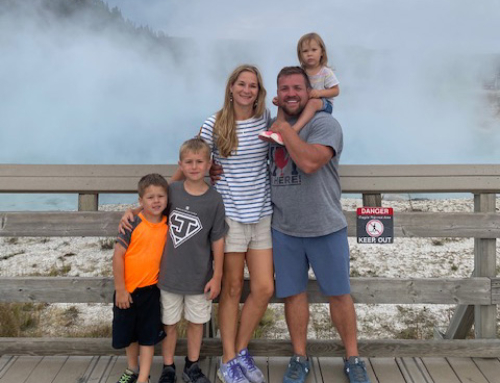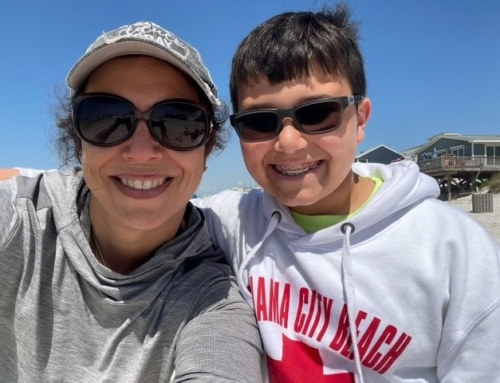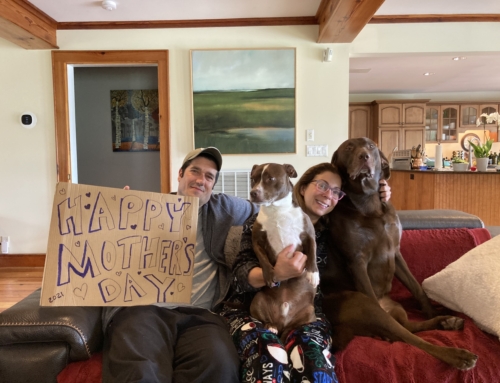Dr. Stephanie Valente has dedicated her career to treating breast cancer patients. Following her fellowship training in breast surgery and oncoplastic surgery at the University of Southern California, Dr. Valente joined the Cleveland Clinic where she heads up the West Region Breast Surgery Program and serves as the Medical Director at the Fairview Hospital Breast Program. She has a passion for managing young women with breast cancer, as well as those with genetic and high-risk disease. Dr. Valente is a nationally recognized speaker and recently spoke about the goal to modify treatment according to tumor biology and genetics at the ASBrS Annual Meeting. DCISionRT® by PreludeDx™ was included in the discussion as a preferred test to evaluate interactions of biomarkers and clinicopathologic factors to generate a DCISionRT Decision Score that provides a 10-year risk profile for ipsilateral (same side) breast tumor recurrence +/- radiation therapy for ductal carcinoma in situ (DCIS) patients.
“Prior to DCISionRT, everyone got radiation. The great thing about DCISionRT is that it allows us to look at the genomic components and the machinery of how a woman’s cancer functions. In practice, I think there is a fine line between overtreating and undertreating breast cancer patients, and DCIS is squarely in that gray zone. Every patient is unique and the approach to treat their DCIS is unique. It is critical to really understand the patient, where they’re coming from, their family history, the amount of DCIS in their breast, and the tumor biology to figure out the best treatment option. I try and give them all their options and help them decide what’s right for them.”
“My talk at the ASBrS conference allowed me to dig into the research on DCISionRT and explore how clinicians are using it, what the data reveals and the impact on patient care. Around the same time, one of our radiation oncologists (@CShahMD) presented DCISionRT at tumor board so the other radiation oncologists and surgeons were aware of it and knew the literature supporting it.”
“That started the important discussions internally of how to set up the portal in our office? Who’s going to order it? Is it the radiation oncologist’s responsibility to follow up with the recommendations? All these details are important to discuss as a team and we’ve been working through those processes. As an academic institution, we value and pride ourselves on following evidence-based literature. DCISionRT is backed by strong evidence. That makes it easy to understand and incorporate. And it is an important tool to use as a multidisciplinary group to educate the patient and determine if we should recommend radiation or not, because we are finding out some women with DCIS don’t actually need radiation.”
“As we are getting started, we are not ordering DCISionRT on every patient, but I think that will be the trend – that DCISionRT is standard for anyone with DCIS so we will know the individual patient’s risk. Our thinking is that if we don’t offer this to our patients, we are withholding the possibility of them learning more information about their cancer and exactly what kind of risk they have.”
“For example, I have seen patients who pick a more aggressive surgery, like a mastectomy, because they really don’t want radiation. If their DCISionRT results show a low risk for recurrence, they are likely to change their minds. We have certainly seen it go the other way too, where we would have traditionally deemed a patient low risk based on clinicopathology and their tumor biology showed them as high risk, making patients feel more confident and informed about their decision to proceed with radiation therapy.”
“As the Fellowship Program Director at Cleveland Clinic, I do a lot of teaching with residents and fellows, and I think that it is very important to help them understand what’s out there and encourage them to review the literature and embrace working with industry. My advice for other surgeons considering DCISionRT is similar – to educate themselves on the test and the literature. PreludeDx does a great job putting all the literature in one spot on the website. I think one of the biggest hurdles when you first recommend DCISionRT is the fear of withholding treatment (radiation) when you think the patient may need it based on traditional clinicopathology. So, consider starting with patients who you believe are low risk to gather your own data to validate.”
“Breast cancer doesn’t play favorites. One in every 8 women will have breast cancer in their lifetime. For me, it has been an amazing opportunity to work with women to understand their individual situations. When a woman gets a breast cancer diagnosis, it stops them in their tracks. My responsibility as a surgeon is to let them know that together we can create a plan. ‘Let’s get you back to where you need to be as soon as we can and get you cancer free with the goal of keeping you that way for the rest of your life.’ The women, and their families, are so grateful and it’s really rewarding to be able to help in this capacity.”
Dr. Valente grew up in Ohio. When she finished her training, she and her husband, who is also a surgeon, returned to Ohio to be near their families. She has three kids so she says, “her hobbies are playing with her kids including soccer, dancing, Barbies and all those fun things that every Mom does when they’re not working. She also enjoys being outdoors, hiking and traveling.”






